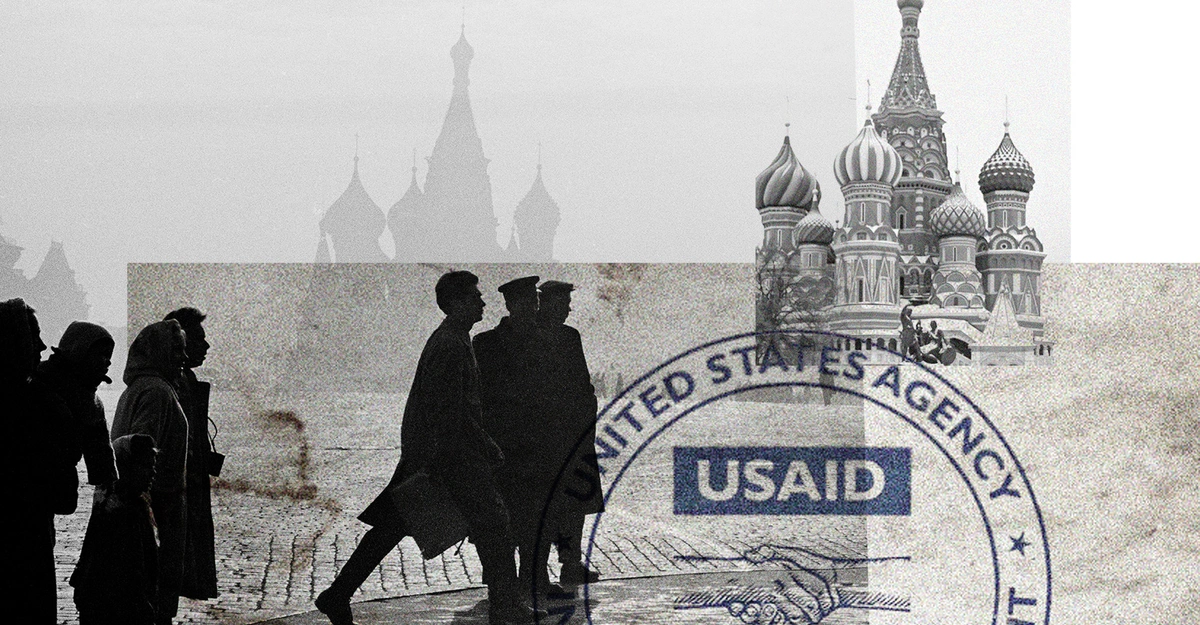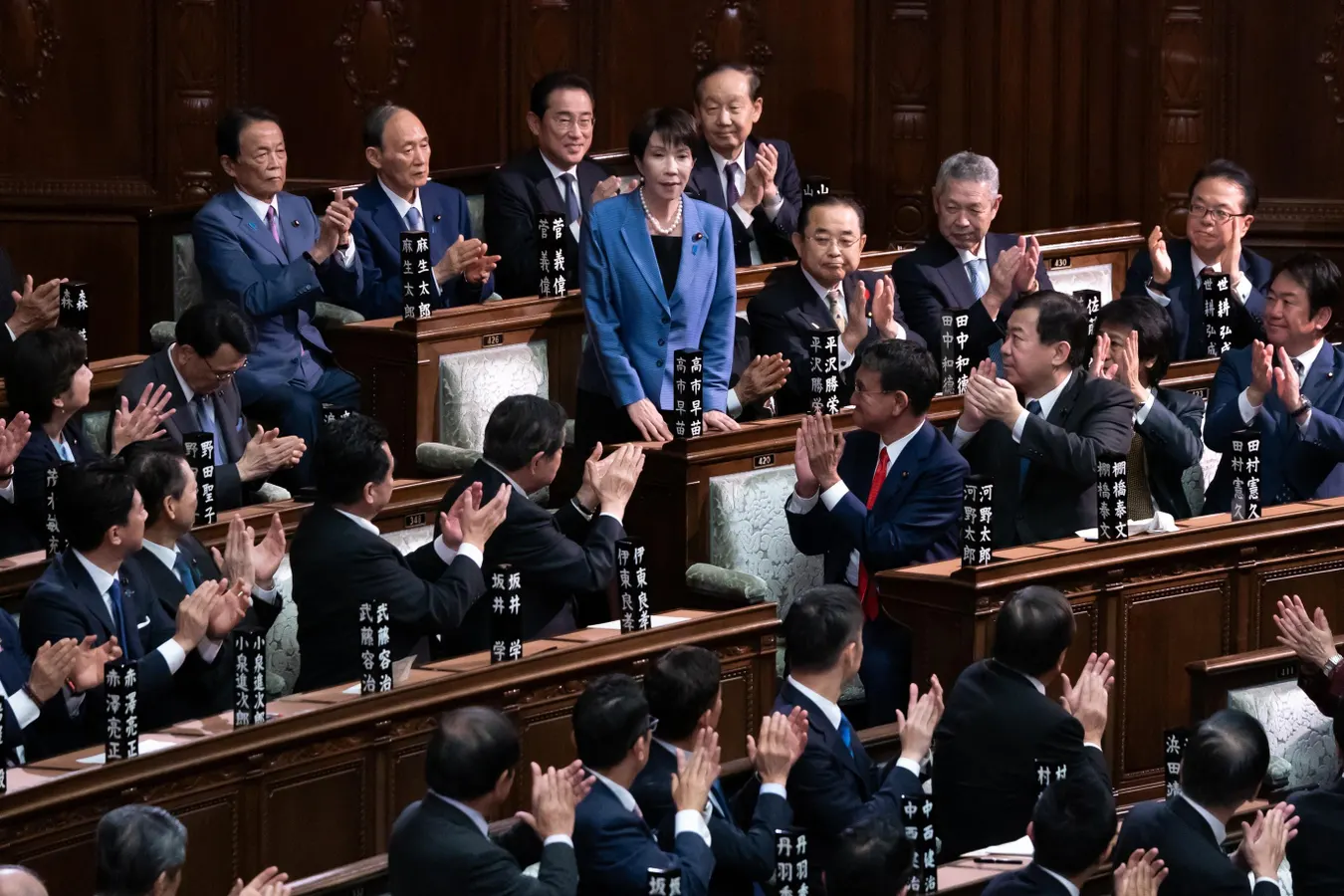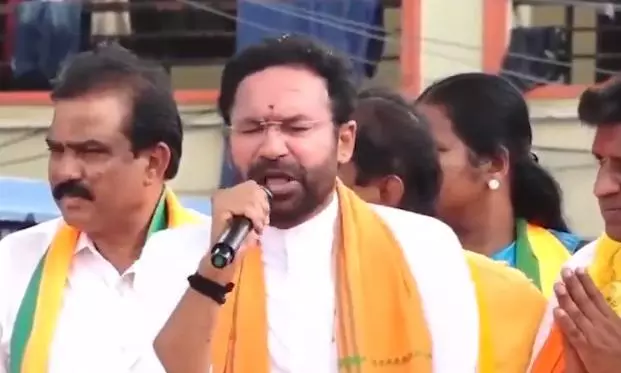Copyright The Atlantic

For decades, USAID was one of the greatest tools America had to promote democratic values in Russia. The agency extended humanitarian assistance while fostering political reform, and in doing so endeared the United States to Russians even as it undercut the Kremlin’s authoritarian ambitions. It was a supreme example of soft power: working “through attraction and persuasion rather than coercion,” as the political scientist Joseph S. Nye Jr. defined the term. Then, in 2012, the Kremlin expelled USAID, a decision that seemed to confirm just how effective it had been. So effective, in fact, that Moscow has now decided to create its own version. The Trump administration shut down USAID on July 1; one week later, a Russian-government official revealed that the regime planned to establish a development agency modeled on the one Washington had just dismantled. Russia senses an opportunity. Under Donald Trump, America has lost both the will and institutional capacity to counter authoritarianism abroad, and Moscow is already exploiting the vacuum that the president has left behind. Indeed, it has been using soft power for more than a decade to centralize its authority, sanitize its image, and accelerate its imperialist aims. As a Ukrainian, I have seen firsthand how the Kremlin emulates Washington’s tactics, wielding them to undermine the same values they were meant to protect. Its plan to replicate USAID suggests that Moscow’s mimicry is only just beginning. The age of Russian soft power is here. No country studied America’s use of soft power more closely than the Soviet Union. Its first lesson came early in the Cold War. In 1950, the CIA launched a covert operation in West Berlin called the Congress for Cultural Freedom, which looked innocuous on paper: The group would invite scholars, artists, and journalists for conferences, exhibits, and concerts. But these events served distinctly geopolitical aims. They offered attendees a place to participate in public exchanges beyond the censorship of the Soviet regime. Over time, the congress fostered a transnational network of culturally influential elites who favored liberal democracy over communism and Marxism. The CIA’s involvement came to light in 1967—but not before the congress had helped seed an anti-communist faction among the Russian intelligentsia and helped erode the Kremlin’s ideological hold over the U.S.S.R. Unlike the Congress for Cultural Freedom, USAID never kept its mission a secret. The agency was founded in 1961 explicitly to promote democracy, prosperity, and stability overseas. In practice, this meant building institutions that supported democratic and civil-society initiatives as well as directing aid across dozens of countries. But USAID had clear limits: It could help educate voters or monitor elections, but the agency’s guidelines prohibited biased interventions such as endorsing a candidate or offering assistance to only one party. In the 1980s, America broadened its use of soft power in the Soviet Union and elsewhere. Congress established the National Endowment for Democracy, a nonprofit whose range of political functions exceeded USAID’s: training political activists, facilitating democratic transitions, endorsing candidates. In Poland, for example, the NED provided nearly $2.5 million to the Solidarity movement, the independent trade union that opposed the country’s Soviet-backed government. But the nonprofit did so discreetly, using the International Rescue Committee, a humanitarian organization, as a conduit for the funds. American soft power achieved some of its most dramatic successes with the so-called color revolutions, a wave of democratization that swept former Soviet states. These included Georgia’s Rose Revolution in 2003, Ukraine’s Orange Revolution in 2004–05, Kyrgyzstan’s Tulip Revolution in 2005, and, later, Ukraine’s Euromaidan in 2013–14. Each was bolstered by American foundations such as the Open Society Foundations and state-linked organizations including USAID, the National Democratic Institute, and the International Republican Institute. In Ukraine, the NED provided major financial support to Ukrainska Pravda, an independent online newspaper that amplified government dissent during the Orange Revolution. Meanwhile, USAID funded the U.S.-Ukraine Foundation, which in turn funded local opposition groups. For its part, Moscow saw America’s use of soft power as brazen political interference—even a threat to its rule. In a 2007 speech at the Munich Security Conference, Russian President Vladimir Putin condemned America’s use of soft power, arguing that it was creating a world in which “no one feels safe.” Rather than eschewing soft power, though, Russia began amassing its own. A few months after Putin’s speech, the Kremlin established the Russkiy Mir Foundation to promote Russian language and culture abroad. The Alexander Gorchakov Public Diplomacy Fund followed a few years later, financing study trips to Russia and hosting international conferences with journalists, activists, and scholars. The initiative looked a lot like the Congress for Cultural Freedom, but reverse engineered to expand the Kremlin’s authority rather than diminish it. As Moscow extended soft power abroad, the regime grew more concerned about other countries exerting it within Russia. In 2011, mass protests broke out in response to parliamentary elections that showed signs of vote-rigging. The Kremlin promptly decried the demonstrations as foreign-financed plots. (USAID and other groups had supported election monitors that found indications of fraud, but no evidence suggests that Western-funded agencies played a role in organizing the protests.) One year later, the regime began designating NGOs as “foreign agents” if they engaged in political activities and received outside funding. Putin claimed that such NGOs had taken in more than $1 billion from foreign sources, offering the figure as ostensible proof of Western meddling. Amid this crackdown, Russia’s Foreign Ministry ordered USAID to leave. By its final year, the agency was operating in Russia with a $50 million budget, 60 percent of which was “allocated for the promotion of democracy and civil society,” according to one analysis. Soft power officially entered Moscow’s foreign-policy lexicon in 2013. In a strategy document that year, Moscow enshrined it as an “integral component of modern international politics” and a “comprehensive toolkit for addressing foreign-policy objectives,” even as the same document warned of soft power’s “destructive and unlawful use” in manipulating public opinion and destabilizing states. Soon after, Putin decided that soft power should be an integral component of domestic politics too. In 2017, his regime established the Presidential Grants Fund, the central mechanism through which the state finances NGOs inside Russia. It was presented to the public as a way to promote grassroots initiatives that foster civil society. But in reality, it has prioritized groups that advance the Kremlin’s priorities by, say, offering nationalistic education. Putin created the Presidential Fund for Cultural Initiatives four years later, which finances exhibitions, festivals, and art that rehabilitate Moscow’s image both at home and abroad. No matter how “destructive” soft power was in the hands of foreign leaders, Putin decided it could be productive in his own. Russia readily admits that it copies America’s soft-power strategy. Indeed, the Kremlin has seemed to suggest that it was pressed to do so. In 2022, Russian Foreign Minister Sergey Lavrov said that any “attempts to interfere” in Russia’s internal affairs must be met with a commensurate response. “We have something to say,” he continued. “We are not shy. We have answers to the false concepts and arguments promoted by Western soft power.” I have seen Russia’s “answers” for myself. In 2014, Russia-backed separatists seized control of Horlivka, my hometown in eastern Ukraine. Authorities quickly banned Ukrainian symbols and dismantled local institutions, then established cultural events such as literary contests, festivals, and concerts aimed to attract Ukrainian youth. At first, my friends and I thought these happenings were benign, even fun. But Russia had designed them to get us to stop identifying as Ukrainians and embrace our new “motherland.” Teenagers competed in musical contests that required them to perform songs expressing devotion to Russia. Boys participated in tournaments that tested their martial prowess, glorifying the idea of fighting on behalf of Putin. Soon these programs were the only public events on offer. They became bound up with the few happy memories I have from the period after the occupation; even my attempts to escape the war—seeing a concert, going to a festival—pointed me back to Russia. Since the full-scale invasion in 2022 and the occupation of new territories, Russia has ramped up its soft-power campaign in Ukraine. The Presidential Fund for Cultural Initiatives has funneled some $500 million into other countries to subsidize Russian propaganda. Much of this has shown up in Ukraine. In parts of the Zaporizhzhia region, the Kremlin sponsored an event earlier this year that used crafts, music, and literature associated with Russian folk holidays to instill in Ukrainians a “sense of belonging” with their new occupiers. Organizers of another event in the region sought to integrate Ukraine’s “liberated territories into a unified cultural and educational space” by staging productions that showcased Russia’s “spiritual and historical” identity. Last year in Donetsk, one program invited children as young as 7 to participate in a dance concert whose goals included the “dissemination of ethnocultural identity.” Now Russia is flexing this muscle well beyond Ukraine. It exerts much of its soft-power work through the Russkiy Mir Foundation, which tries to cast Russia to the world as an enlightened ally rather than a regressive tyrant. In Beijing, Russian and Chinese students gathered this summer to commemorate the “heroic deeds of their ancestors” in World War II. In Istanbul, locals visited the headquarters of the Russian Geographical Society to see an exhibition “highlighting Russia’s rich natural and cultural heritage.” In Barcelona, the Russian Academy of Music hosts concerts and competitions celebrating Russia’s musical tradition. As of 2022, the Russkiy Mir Foundation reported running 96 centers across 45 countries that promote Russian language and culture through exhibitions, lectures, and academic partnerships. The foundation organized nearly 2,000 events that year, in addition to operating a television channel, radio station, and magazine—all of which serve to sanitize the country’s international image. Meanwhile, the Gorchakov fund works closer to home, sponsoring academic gatherings and Russian-language programs in former Soviet states. Exactly how a Russian version of USAID would fit into these existing initiatives is unclear, given how little is known about the proposed agency. But recent history suggests that its mission would have less to do with proffering aid than with complementing the Kremlin’s liberal use of brute force. When the Russian legislator Sergey Mironov was asked about the agency, he replied, “Soft power works effectively only when it is a glove worn over an iron fist.” Such an agency could allow the Kremlin to project substantially more power abroad, not least by unifying the many fragmented efforts currently run by various ministries and state-affiliated actors. More than anything, though, a centralized development agency would help Russia position itself as an alternative to America—or, more precisely, its replacement. Moscow has a chance to present itself as a protector to the many nations that the U.S. once supported but has since abandoned. That’s an opportunity Russia isn’t going to waste.



